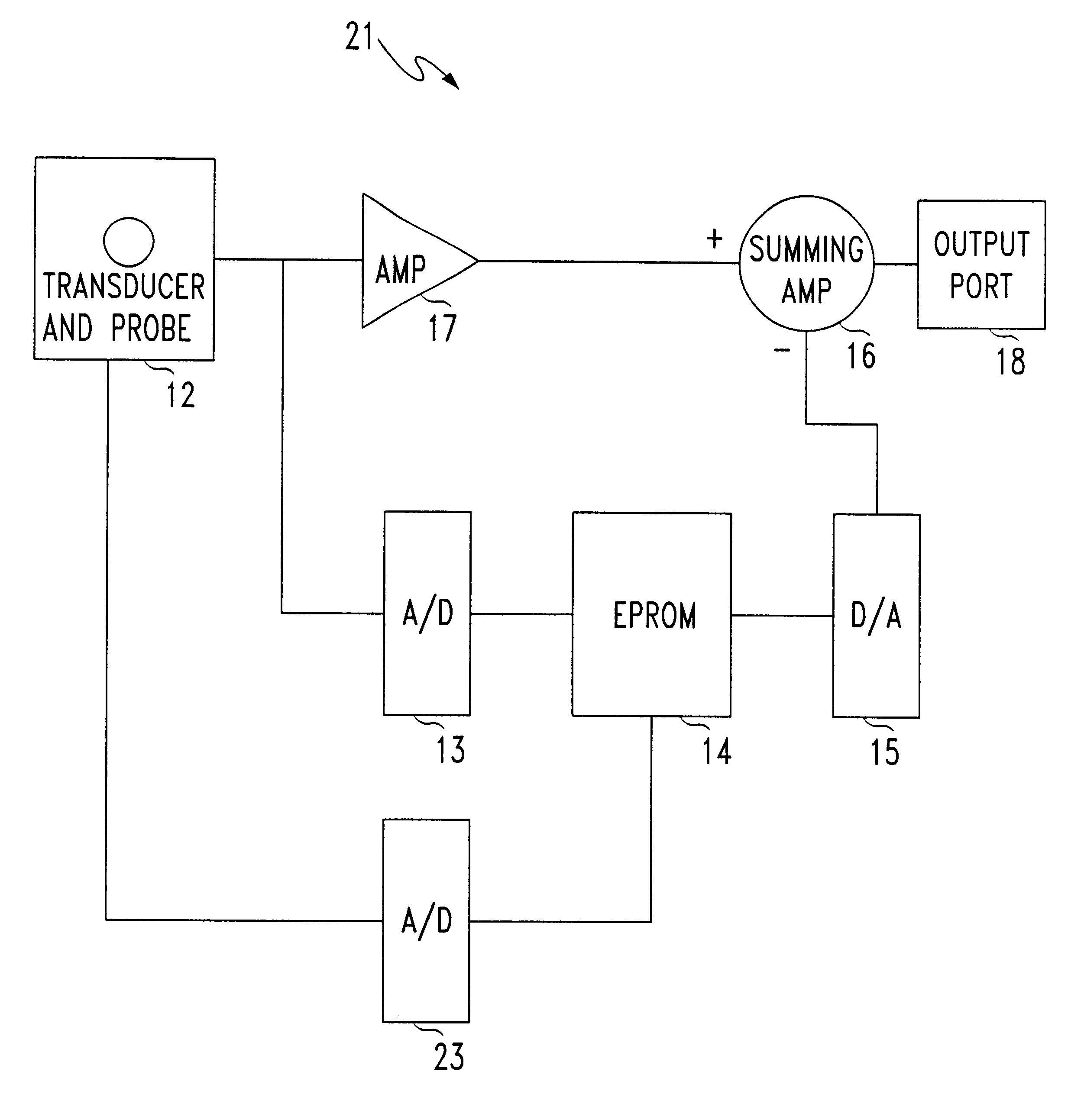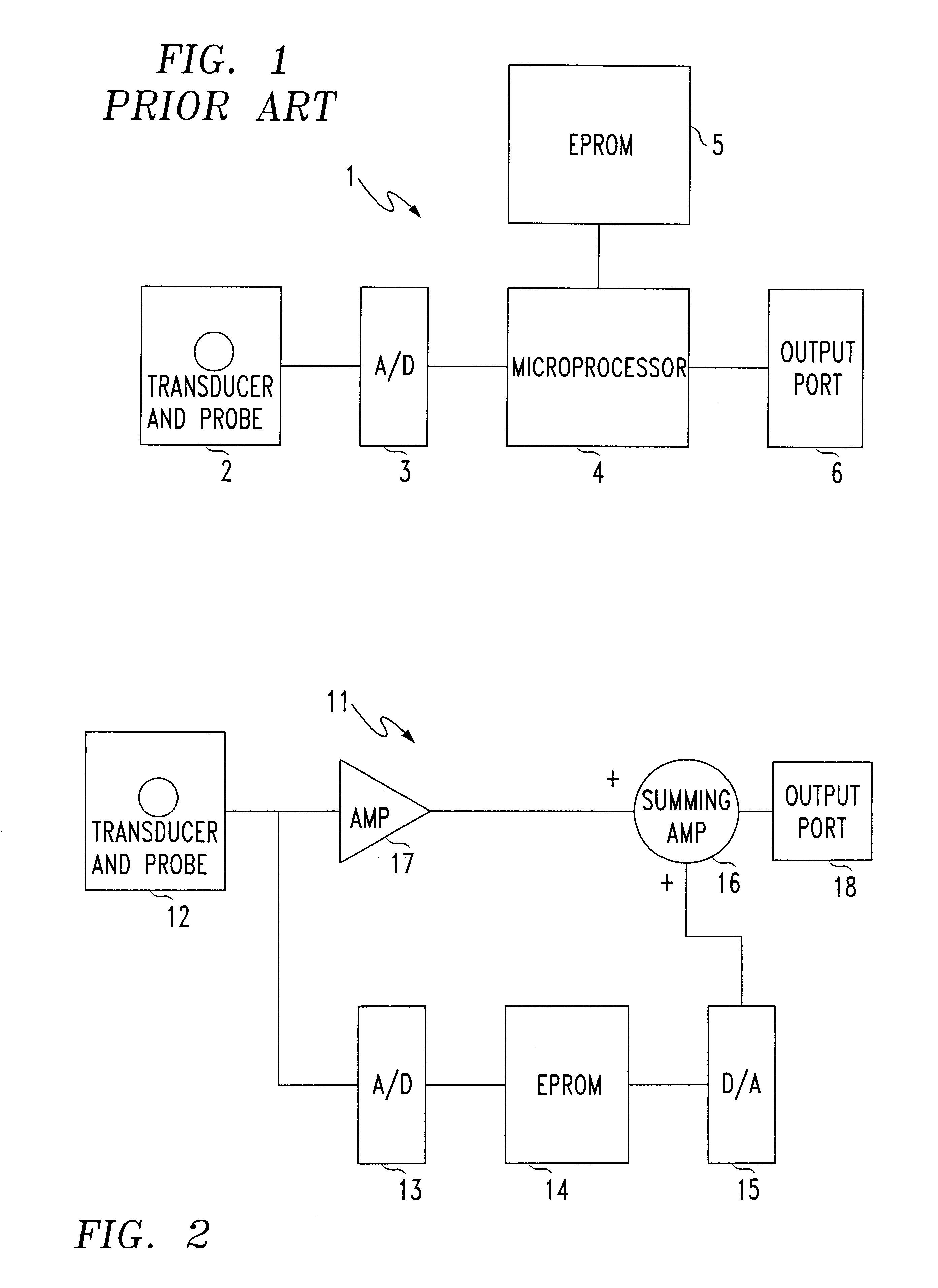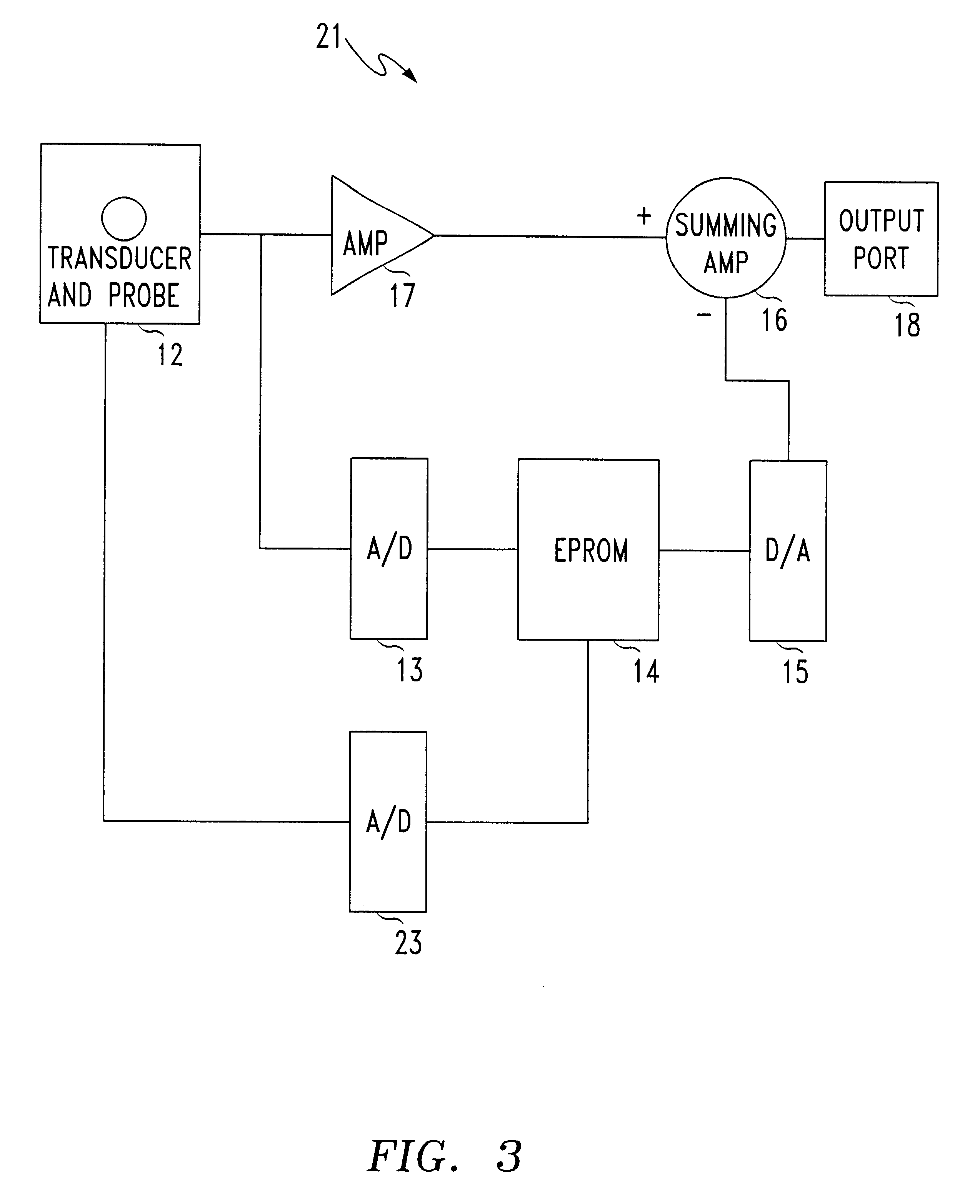Electronic sensor apparatus
a sensor and electronic technology, applied in the direction of magnetic field measurement using galvano-magnetic devices, magnetic measurements, instruments, etc., can solve the problems of microprocessors that tend to fail or crash frequently, sensor failure to work correctly or accurately, and difficulty in obtaining a quick and clear indication of the value of sensed parameters
- Summary
- Abstract
- Description
- Claims
- Application Information
AI Technical Summary
Benefits of technology
Problems solved by technology
Method used
Image
Examples
Embodiment Construction
FIG. 1 shows a prior art configuration of a sensor used to measure a parameter. The sensor 1 includes a transducer and probe 2, an analog to digital converter 3, a microprocessor 4, a memory device, shown in this embodiment as an EPROM 5, and an output port 6.
In operation, an analog transducer signal is generated in the transducer 2 and transmitted to the analog to digital converter (ADC) 3. The ADC then converts this analog signal into a digitized signal with a value dependent on the analog signal's voltage, and transmits same to the microprocessor 4.
With the help of information stored in and supplied from the EPROM 5, the microprocessor 4 processes the digitized information supplied to it to provide a digitized output signal to output port 6, where the value represented by this digitized signal will have a substantially linear relationship to that of the parameter measured by the sensor 1.
As discussed previously, the use of a microprocessor 4 in the sensor's construction places so...
PUM
 Login to View More
Login to View More Abstract
Description
Claims
Application Information
 Login to View More
Login to View More - R&D
- Intellectual Property
- Life Sciences
- Materials
- Tech Scout
- Unparalleled Data Quality
- Higher Quality Content
- 60% Fewer Hallucinations
Browse by: Latest US Patents, China's latest patents, Technical Efficacy Thesaurus, Application Domain, Technology Topic, Popular Technical Reports.
© 2025 PatSnap. All rights reserved.Legal|Privacy policy|Modern Slavery Act Transparency Statement|Sitemap|About US| Contact US: help@patsnap.com



